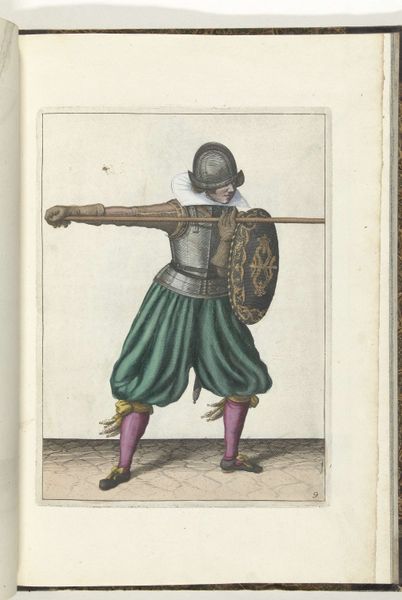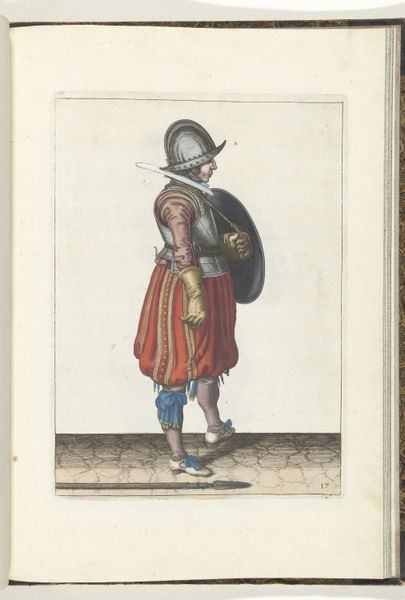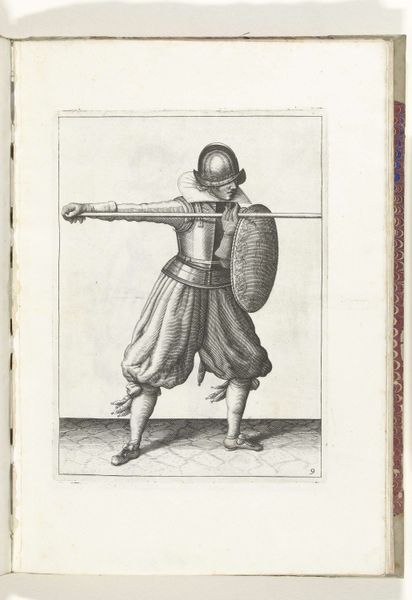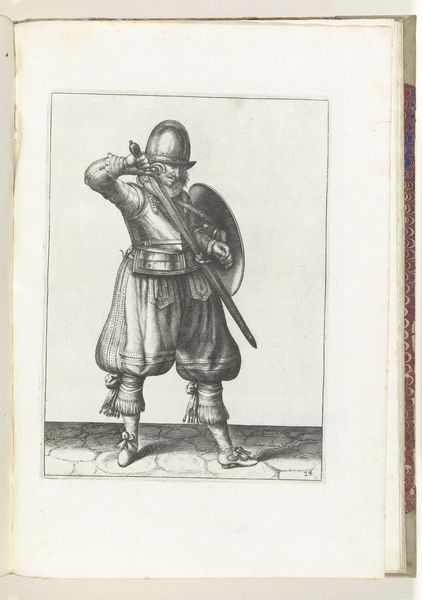
De exercitie met de targe en rapier: hoe de soldaat zich moet verdedigen met de targe rustend tegen de linkerknie en linkerschouder, de getrokken rapier in de hand (nr. 8), 1618 1616 - 1618
0:00
0:00
drawing, coloured-pencil, paper, ink
#
drawing
#
coloured-pencil
#
weapon
#
narrative-art
#
baroque
#
mannerism
#
figuration
#
paper
#
ink
#
coloured pencil
#
genre-painting
#
academic-art
#
watercolor
Dimensions: height 255 mm, width 187 mm
Copyright: Rijks Museum: Open Domain
Editor: This drawing, "De exercitie met de targe en rapier," from around 1616-1618 by Adam van Breen, is a surprisingly colorful depiction of a soldier. The pose is very rigid, almost hesitant. How should we interpret this figure, standing so formally in his armor? Curator: Note how the subject’s pose, with the targe – that small shield – guarding his left side, echoes a stance of guardedness that permeates the early 17th century, a time of religious and political anxieties. Consider how the artist renders the weaponry. The rapier isn't just a sword; it's a symbol of status, skill, and readiness. Doesn't its presence, poised and upright, tell us something about personal honor and the societal pressures of the day? Editor: Yes, I see that now! And the ornamentation on the targe – does that carry any specific symbolism, or is it purely decorative? Curator: The targe's decoration, featuring elaborate patterns, might seem merely decorative at first glance, but consider it within the context of the Mannerist and early Baroque periods. Ornamentation was never just for show; it reinforced the status and identity of the bearer. It also served a psychological purpose: to intimidate opponents by conveying power and wealth. Think of the shield not just as a piece of equipment, but a statement. Editor: That makes perfect sense. It’s interesting how much a single figure can convey about an entire era. I hadn't considered the psychological aspect of weaponry before. Curator: Precisely. Each carefully chosen detail echoes broader cultural anxieties and aspirations. So, looking at it again, what does the image convey to you *now*? Editor: Now, I see the soldier as not just an individual, but as a product of his time – a symbol of the era’s complex blend of martial prowess and societal anxieties. Thanks!
Comments
No comments
Be the first to comment and join the conversation on the ultimate creative platform.













